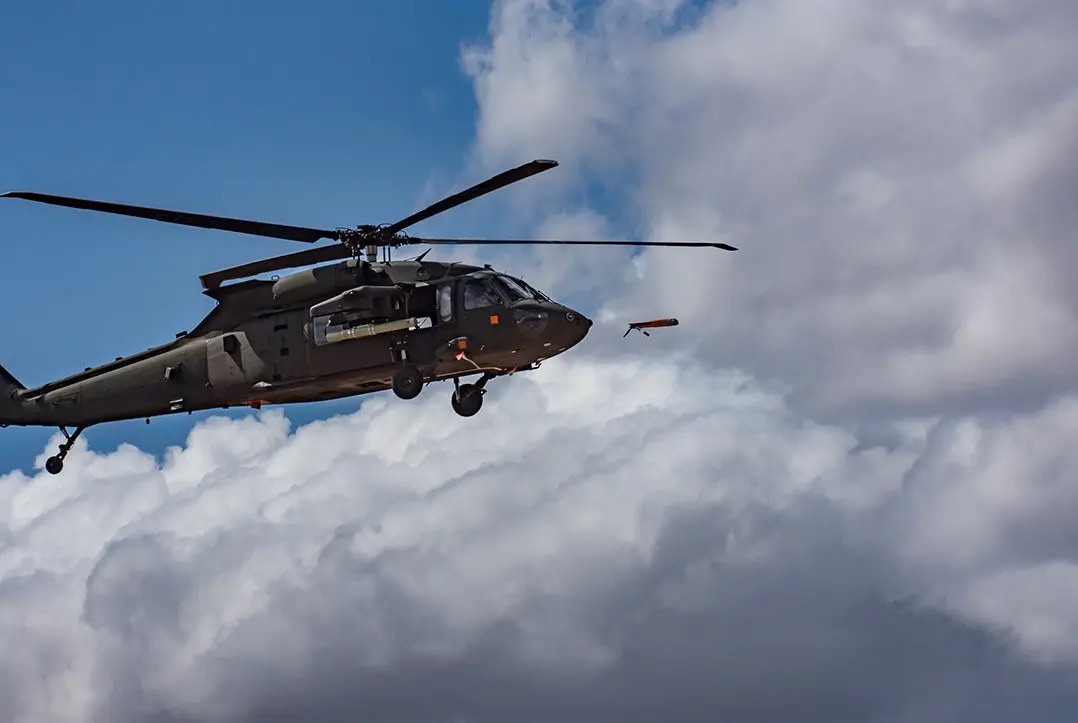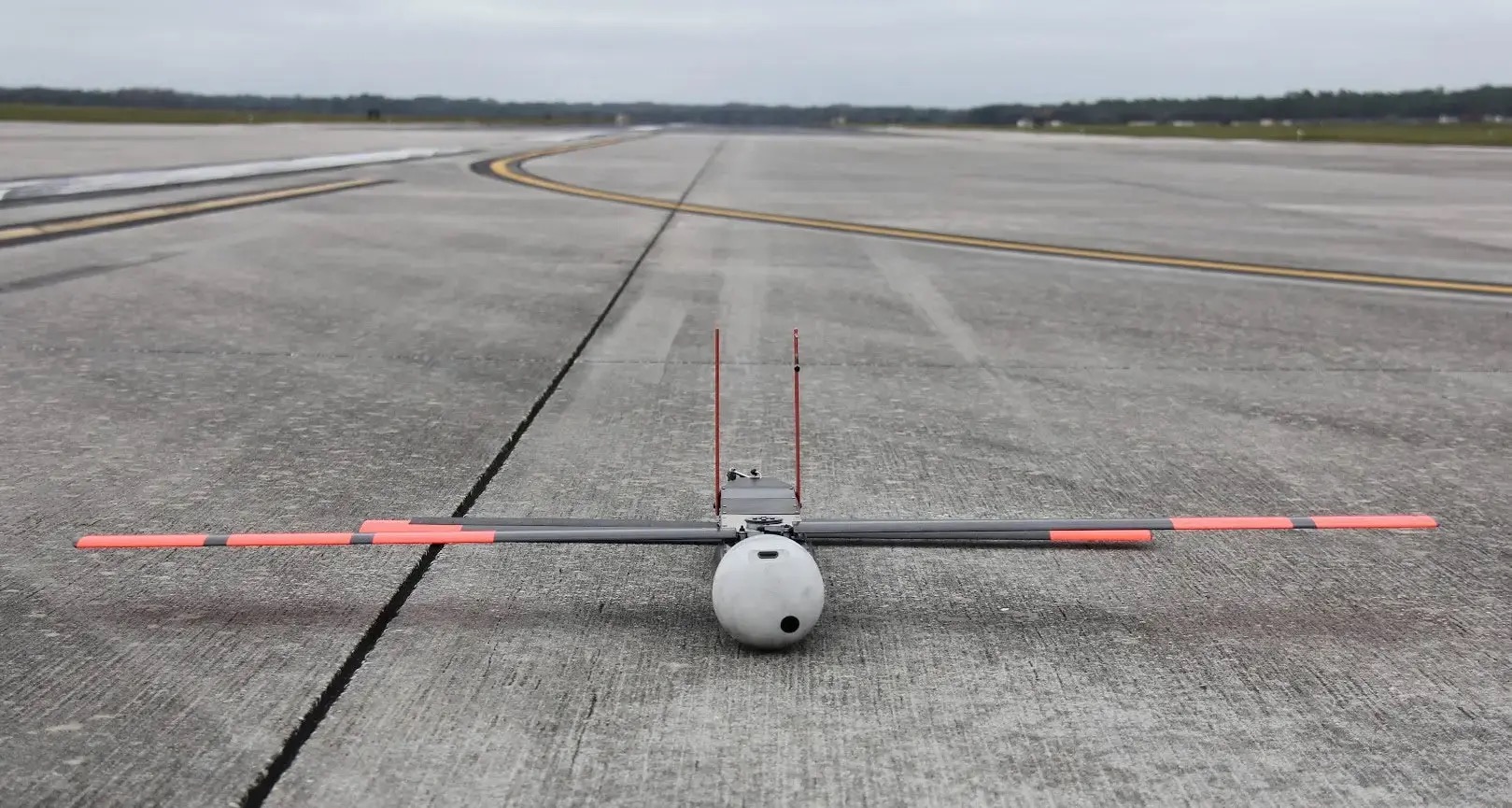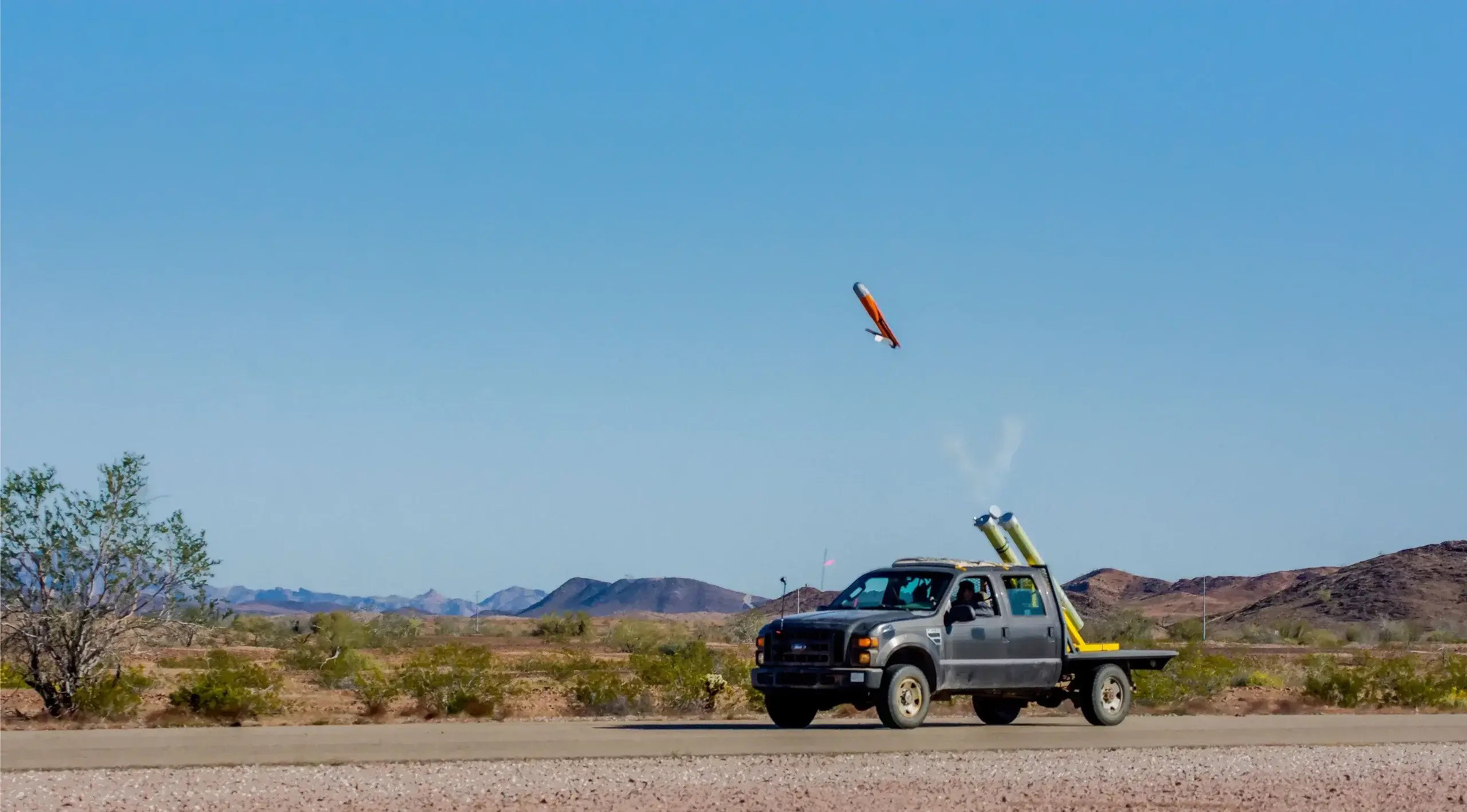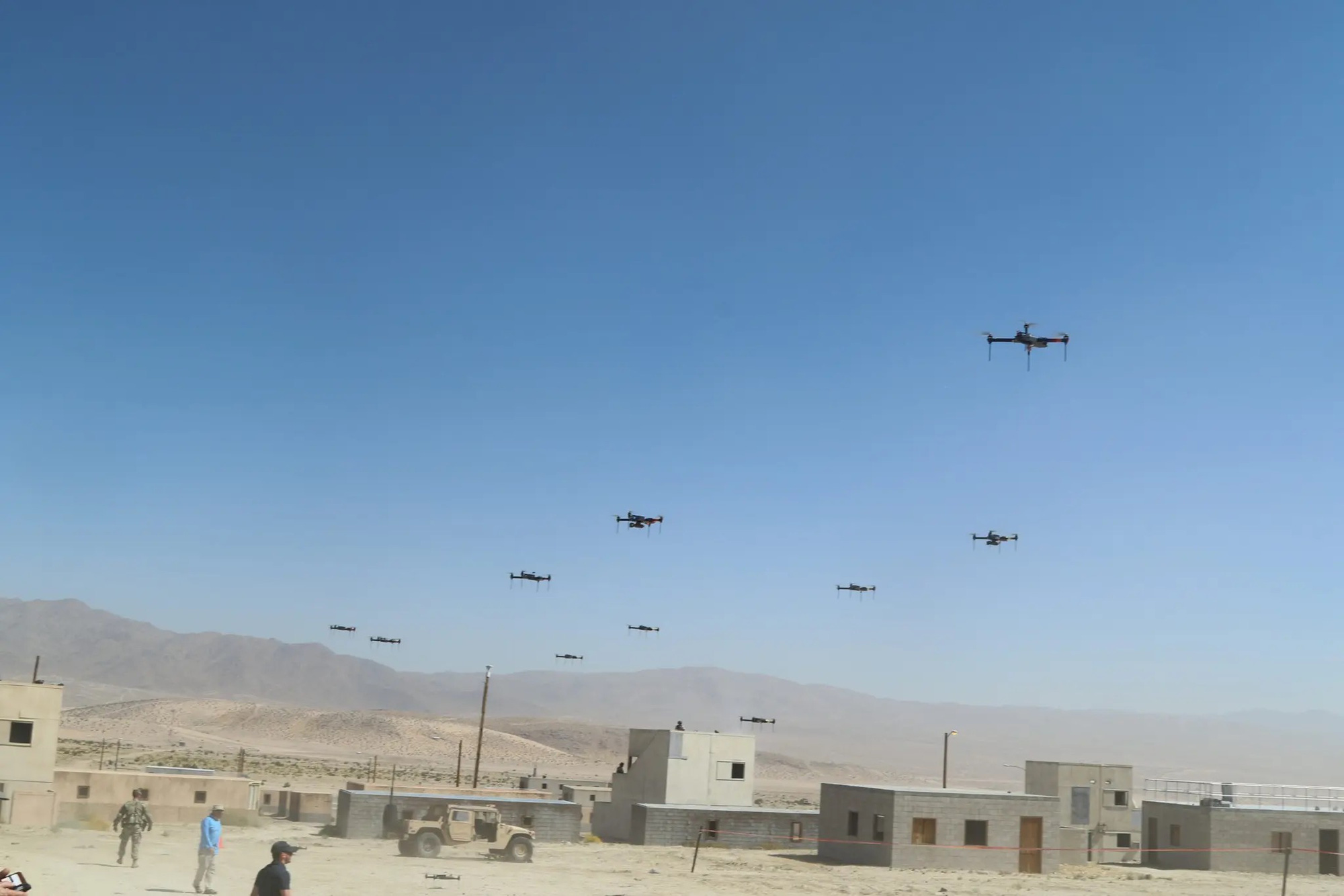These drones will be deployed from US and allied helicopters; It’s also the largest swarm of “interactive ALE” drones the military has ever tested (ALE stands for Air-Launched Effects, which refers to drones that launch from the air over a war zone inside a war zone. below, controlled by soldiers sitting on the plane or fully autonomous and transmitting information about the helicopter and the infantry, to the benefit of the user).
These drones are a combination of Area-I’s ALTIUS 600 model and Raytheon’s Coyote. They will be launched from various aircraft and ground vehicles at exercise EDGE 22 organized by the US military from April 25 to May 12 at Dugway Test Range near Salt Lake City, Utah.

The ALTIUS-600 was released from the UH-60 Black Hawk helicopter
The ALTIUS-600 weighs from 9 – 12.25 kg depending on the load, has a range of more than 444 km, and the battery works for at least 4 hours. Like PILS, this drone can be launched from CLT and RIwP. It can carry a variety of cargoes to perform a wide range of intelligence, surveillance, reconnaissance (ISR), and signals intelligence (SIGINT) missions. ALTIUS can also be fitted with an additional warhead for attack, or used as an anti-drone weapon when combined with Lockheed Martin’s MoRFIUS system. Last year, Area-I announced the ALTIUS-700, with three times the payload of the previous generation, up to 5 hours of flight time, and can be equipped with components to perform surveillance missions, anti-UAS, electronic warfare, ammunition transport, and signal intelligence.
Meanwhile, Raytheon’s Block I Coyote drone was first introduced in 2007, with a rear strut, and a pair of wings and dual tail with the ability to unfold. They were billed as a low-cost intelligence, surveillance and reconnaissance platform, but ended up being the test product for a variety of applications, including launching from the air by NOAA aircraft to collect data from during hurricanes in 2017.

Drone Block I Coyote by Raytheon
Block 2 was introduced in 2018, with a more missile-like appearance, no wings, and is specifically designed to combat drones. Block 3, launched last year, is deployed to naval autonomous ships to launch from above or below the surface of the sea.
ALEs possessing a variety of sensor technologies will be launched from aircraft, ground vehicles, and infantry, and then linked together as they fly back into the war zone. This swarm of drones will cover the entire combat area, identify enemy forces with infrared sensors and integrated electronic battlefield systems capable of detecting emitted signals, changing positions and transmitting information. then back to the network of operators and manned attack planes.

ALTIUS is launched from Area-I .’s PILS system
EDGE 22 is part of experimental exercises organized by the US military to evaluate technology and practice new combat models. About 20 other defense units are expected to participate in EDGE 22, with at least 50 technologies tested, including operation and coordination with other units of the automatic sensor network. . To assess the potential for bottlenecks and speed up decision-making, Australia, Canada, France, Germany, Italy, the Netherlands and the UK will join the US in the exercise.
EDGE is seen as a learning activity from the PC 21 drills last fall, thereby clearing the way for PC 22 later this year.
In PC 21, two ALTIUS 600 drones were launched and controlled from a Black Hawk UH-60 helicopter with DARPA’s autonomous brain called the Aircrew Labor In-Cockpit Automation System, becoming the second airborne sensing system. The second and third serve to transmit data for reconnaissance and bring data back to the operating network. The successful testing of this small swarm of drones has created conditions for the US side to conduct a multimedia exercise with 30 drones combining two fighter jets aimed at the landing area behind the enemy’s station. The drone swarm will be used to sense, detect, assess and possibly strike enemy positions before the manned helicopter arrives.
The idea behind this tactic is to deploy swarms of spy drones and deliver ammunition behind enemy positions to find and identify hidden enemy forces. Linked together, swarms of drones can scan large areas of terrain fully autonomously and transmit video and target information about manned platforms assembling out of range of the enemy. Last year, DARPA tested a similar tactic but relied on a smaller swarm of drones for urban missions rather than air strikes. The US military can also use larger autonomous platforms such as the MQ-1C Gray Eagle in a standstill situation.
The military’s plan for each ALE is to perform at least one of the predetermined groups of targeting and reconnaissance missions – “detect, locate, locate, report”, or DILR. The drones in the swarm will carry active or passive functional systems. For example, passive drones will carry infrared or electro-optical imaging cameras, or sensors capable of electronic positioning emitted by the enemy, including from communications and radar systems. Active drones carry an electronic jammer to disrupt enemy communication and sensing systems, or a warhead to directly attack enemy positions.
You can see a description of this tactic in the video below:
Tactics of hitting the council with a swarm of US military drones
Once the targets are locked and identified, some of the planes in the swarm can be deployed as suicide drones to strike the target while others observe for semi-indirect or machine-launched missiles. fly. Sharing tasks and packages between drones in the swarm makes the drone network more flexible, because each aircraft is not forced to perform all the tasks set out. It also allows for the use of smaller and cheaper UASs because they do not have to carry both reconnaissance and attack equipment.
The U.S. military is currently evaluating the capabilities of future battlefield drone swarms, in a variety of configurations and sizes, launched from a variety of platforms, including infantry vehicles, airships, and airships. , long-range missiles, and other unmanned systems.
ALTIUS has previously been launched from MQ-1C drones and UH-60 Black Hawk helicopters, as well as XQ-58A Valkyrie stealth drones. Using Area-I’s PILS launch system, ALTIUS can be launched from C-130, AC-130J, P-3, and civilian aircraft, as well as from a DAGOR ultralight tactical vehicle .
With these systems, the US military will get a wider and more detailed view of the future battlefield, before manned aircraft and infantry approach the enemy. ALTIUS was also a testing ground for what would later become an ALE line with a wider range of capabilities.

Crucial in the deployment of swarms of drones, and in the military’s larger combined strategy, is an anti-jamming network strong and covert enough to operate in environments with limited communications. lost. The drones themselves can be used as repeaters to expand communication between forces deployed on the battlefield and command posts in the rear.
Such a secure and hierarchical network of long-range strike and surveillance vehicles would allow the military to create the desired battlefield conditions before attacking defensive positions, and ensure that forces are attacking military targets in highly complex environments like urban.
Regardless of the results of the EDGE 22 test, the military will continue to push the networked battlefield model with high mobility into the future. PC22 this fall will likely be the debut of an even larger swarm of drones, performing even more complex tasks, to achieve that goal.
Reference: TheDrive
